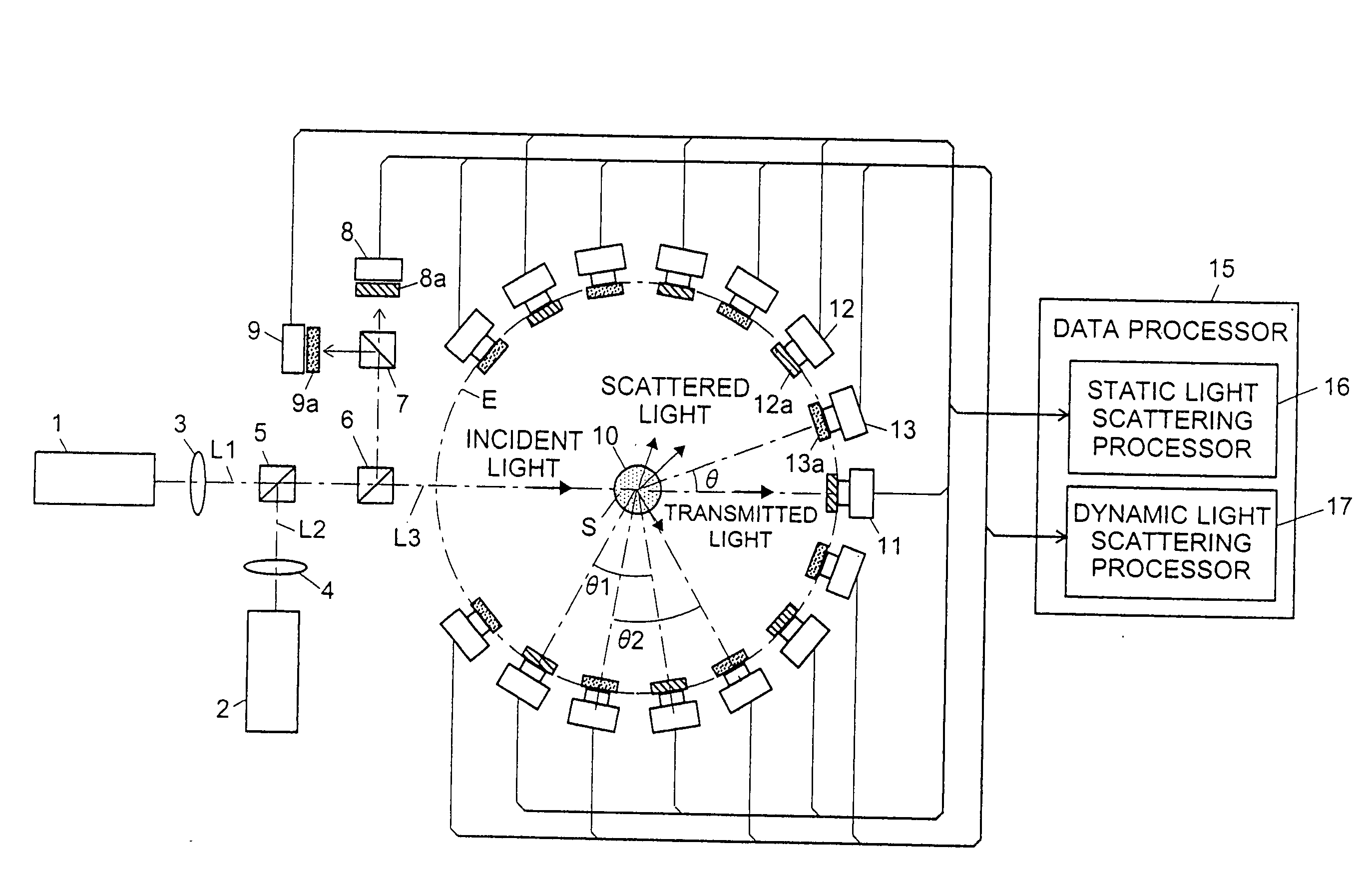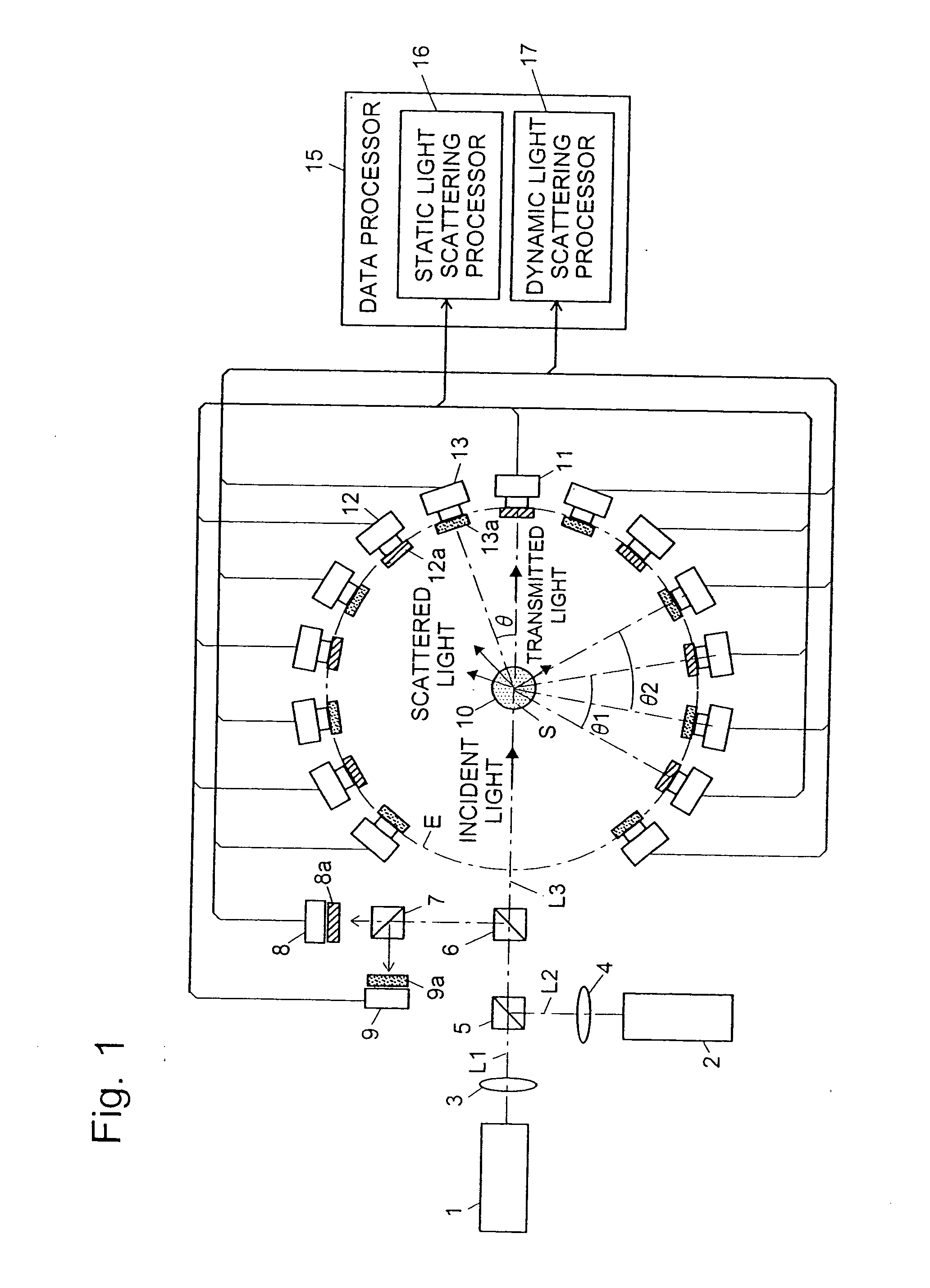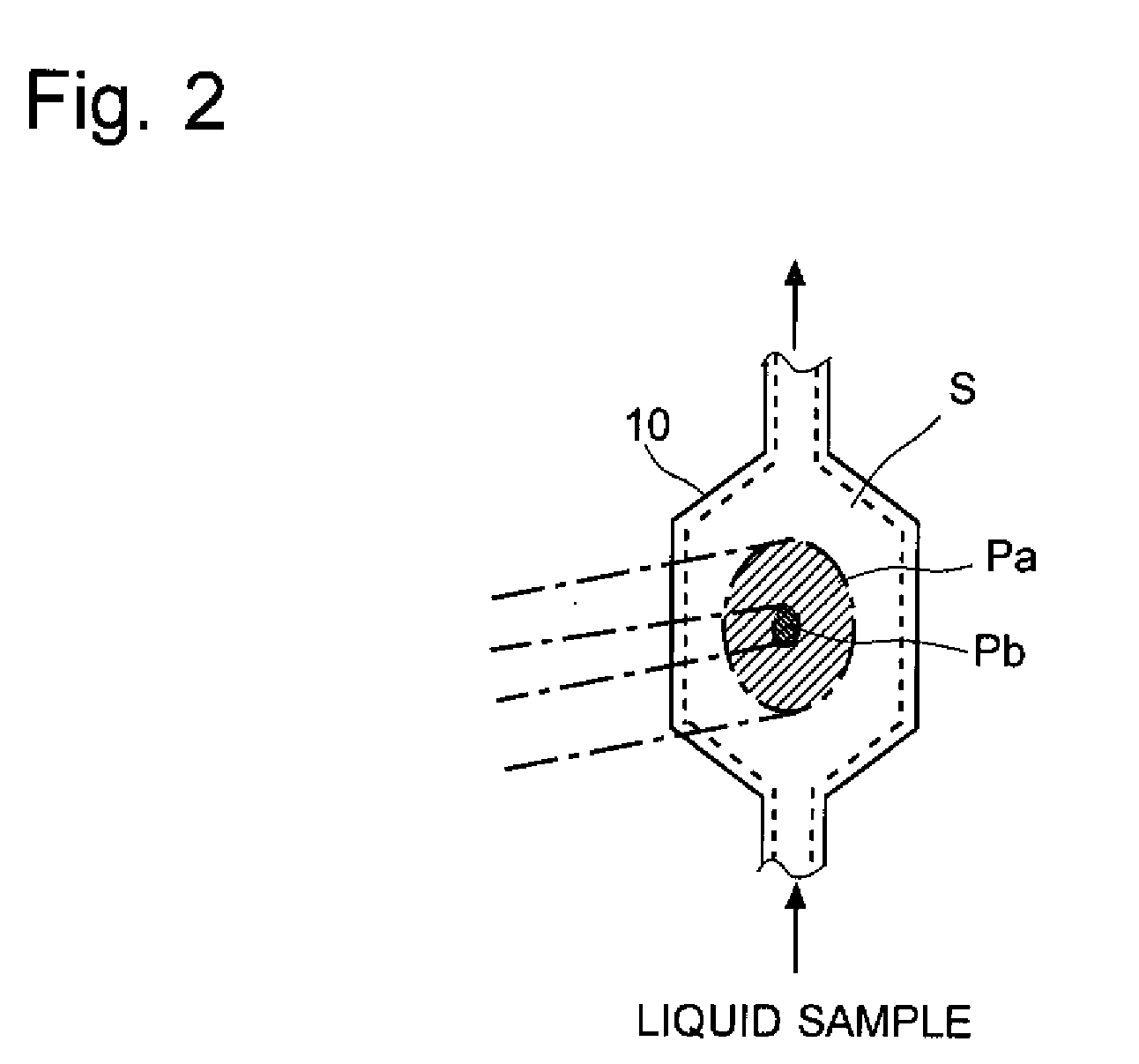Light scattering detector
a detector and light scattering technology, applied in the field of light scattering detectors, can solve the problems of reducing the accuracy of measuring ultrafine particles with a diameter of less than 10 nm, difficult or impossible separation of components by liquid chromatography, and large molecular weight, and achieves simple measurement operation, improved accuracy, and elimination of dynamic light scattering measurement results.
- Summary
- Abstract
- Description
- Claims
- Application Information
AI Technical Summary
Benefits of technology
Problems solved by technology
Method used
Image
Examples
Embodiment Construction
[0066]First, a hybrid light scattering detector which is an embodiment of the light scattering detector of the first aspect of the invention is described with reference to figures. FIG. 1 is an overall block diagram of a hybrid light scattering detector of this embodiment and FIG. 2 shows a state of an incident light in the sample cell.
[0067]In the hybrid light scattering detector of this embodiment, a sample cell 10 is placed at the center of the circle E. The sample cell 10 is a flow cell for providing the liquid sample S thereto with transparent walls. (As the sample cell 10, other cells for containing a liquid sample such as a square cell and a test-tube cell may be alternatively used.) On the circle E, a transmitted light detector 11, a plurality of static light scattering detectors, and a plurality of dynamic light scattering detectors are placed around the sample cell 10. The plural static light scattering detectors 12 are placed with a predetermined angular interval of θ1, a...
PUM
| Property | Measurement | Unit |
|---|---|---|
| diameter | aaaaa | aaaaa |
| light scattering | aaaaa | aaaaa |
| first wavelength | aaaaa | aaaaa |
Abstract
Description
Claims
Application Information
 Login to View More
Login to View More - R&D
- Intellectual Property
- Life Sciences
- Materials
- Tech Scout
- Unparalleled Data Quality
- Higher Quality Content
- 60% Fewer Hallucinations
Browse by: Latest US Patents, China's latest patents, Technical Efficacy Thesaurus, Application Domain, Technology Topic, Popular Technical Reports.
© 2025 PatSnap. All rights reserved.Legal|Privacy policy|Modern Slavery Act Transparency Statement|Sitemap|About US| Contact US: help@patsnap.com



